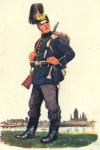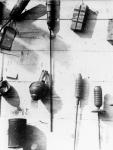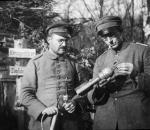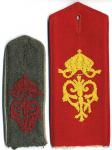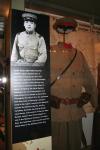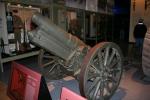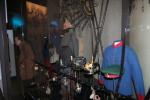-
Posts
2,962 -
Joined
-
Last visited
Content Type
Profiles
Forums
Blogs
Gallery
Events
Store
Everything posted by Chip
-

TK Quiz
Chip replied to Robin Lumsden's topic in Germany: Imperial Uniforms, Headwear, Insignia & Personal Equipment
Robin, So does this mean I have guessed the correct time period? It appears that your pictured patch is the same one as pictured in black and white. Notice the same irregular edge to the outline. Chip -

TK Quiz
Chip replied to Robin Lumsden's topic in Germany: Imperial Uniforms, Headwear, Insignia & Personal Equipment
Robin, I do not know specifically what this patch is, but I can offer the following thoughts. During the First World War the Germans did wear sleeve patches, but the only examples that would have had a ring around the insignia were related to the navy. Naval ground troops did wear Feldgrau sleeve patches in this style, but they were just gray versions of their normal rate insignia. So I think you can dismiss the wartime period. The early Weimar army also wore sleeve patches with rings and they were used to identify units, as there were no shoulder boards (just a shoulder cord) during this period. There exists a chart of these patches, which I don't have a copy of, but I do have a few examples of the sleeve patches. They have chainstitched unit numbers with colored outer rings, which denote the branch of the service. Your patch may be from this period, and perhaps the gray ring denotes Kraftfahrtruppen. So my guess would be armoured car personnel from that period. Perhaps you already know what this patch is and are asking the question rhetorically, but that is my best guess. Chip -

EK 1914 Why so few EK doc collectors?
Chip replied to Chris Boonzaier's topic in Germany: All Eras: The Iron Cross
I don't think there are many who collect items from this period that are not attracted to these documents. Nearly every collector I know has one or more EK documents. Some pick them up in association with their love for the medals. For others it's the wonderful graphic art of the period that displays so well. And there are those that just love the history that they represent or the challenge of finding out more about the award winner. For me, it is a bit of all of the above. I bought my first examples back in the early 1980s on one of my trips to Germany. Even back then I paid nearly $100 for the larger format, color lithograph pieces. My only regret is that I didn't buy more. My guess is that most collectors would like to have a few very nice examples, but the difficulty (and expense) of displaying these pieces is the limiting factor. To be sure, the majority of collectors cannot decipher S?ttlin, which is also a deterent. On-line competition for nearly any example, be plain or fancy has driven the prices higher than the casual collector wants to pay. I think Chris might agree that acquiring these documents has become an expensive hobby that has left behind all but those most serious collectors. So that is why I leave the collecting of these documents to others. I suspect many do the same. Of course, if I could ever find that elusive Schmuck EKI document, I would make room for one more! Chip -
Chris, I know they often worked together with Rohr, but what about the Garde=Res.=Pionier=Rgt.? Maybe sort of one dimensional, but without question amongst the most elite units. They certainly found favor with the crown prince. But alas, I have seen no Schmuck award documents for them....unless, of course, you have one. Chip
-
Rick, In your photo it looks like this man qualified for his shooting cord while in the artillery. At least it looks like a silver shell hanging from the lower end. Chip
-
Rick, If reading S?tterlin was all that was needed, there would be others who could perhaps make some sense of this. But your knowledge of the military terms, abbreviations of those terms and your excellent grasp of the German army in general makes this job maybe something that only you could do. Sometimes, we do this sort of work for our own edification, but it seems you have a higher purpose and for that we and others to come owe you a debt of gratitude. Most excellent, Dude! Chip
-
Mike, Your first guess is correct. The cyphered strap for the I.R.72 was not instituted until August 16, 1912, which means that it existed for a much shorter time span than most other regimental cyphers. Dunkelblau versions and the M07/10 field gray, red piped example for enlisted men, would only have been made for three years. Chip P.S. Your list would therefore also be missing several more infantry cyphers created between 1913-1918.




